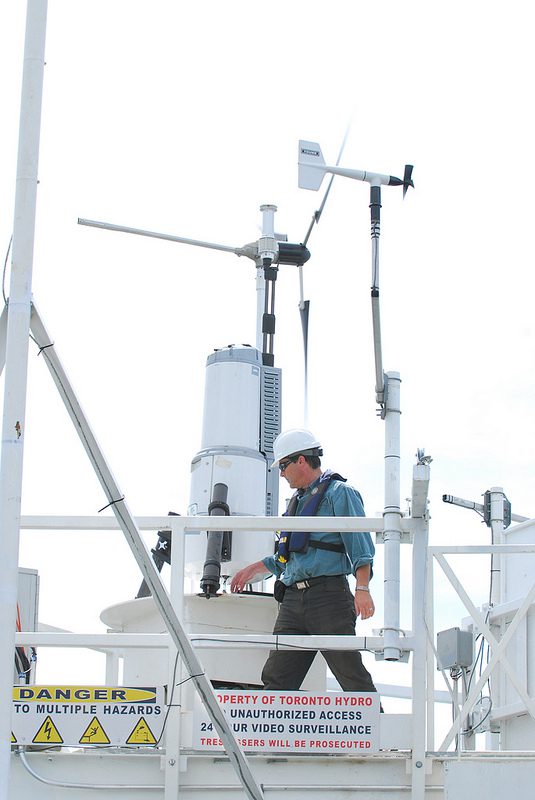According to Toronto Hydro, the winds over Lake Ontario near the Scarborough Bluffs can support power production.
The confirmation came as a result of a two-year wind measurement project completed on Aug. 27.
An anemometer was constructed about one kilometre south of East Point Park during the summer of 2010 to determine the suitability of the site for wind turbines. Toronto Hydro spokesperson Tanya Bruckmueller-Wilson said the early results have surpassed their forecasts.
“The expectations were that the wind speeds would be 7.5 metres per second and the initial results are slightly higher than that,” she said.
According to Bruckmueller-Wilson, those speeds are sufficient for wind power generation.
But don’t expect to see turbines in Lake Ontario anytime soon. Significant opposition to the project within the community resulted in an indefinite political roadblock. Two separate moratoriums preventing wind farms in Lake Ontario remain in place. The first was passed in September 2010 by the Toronto and Region Conservation Authority, followed by a similar motion passed by the provincial government in February 2011.
Scarborough East Councillor Paul Ainslie fought against the installation of the anemometer and the steps being taken towards wind farming near Scarborough.
“I didn’t want [the anemometer] in the lake to begin with,” he said. “My community was not happy about it, we thought it was trying to industrialize Lake Ontario.”
Ainslie said wind turbines are both dangerous for the environment and an inefficient source of electricity.
“A huge concern for me is spending millions upon millions of dollars on turbines in an area where the experts have said there is no wind,” he said. “You’re industrializing the lake by doing that and that is our drinking water.”
Sherri Lange, CEO of the North American Platform Against Wind Power agrees with Ainslie’s position. She stressed the impact turbines could have on the ecology of the Scarborough Bluffs.
“The Great Lakes are a major migration route for a variety of birds,” she said. “It is very concerning, just look to the United States where wind turbines are a huge factor in a number of bird species becoming close to extinction.”
Lange also disputed the notion that Lake Ontario’s winds could support efficient energy production.
“There have been studies done where the experts all said there is not enough wind in the Great Lakes,” she said.
Ainslie also pointed to studies which contradict the anenometer’s results.
“[Toronto Hydro] decided to basically ignore the studies that had already been done to spend millions of dollars to put an anemometer in an area where they were told it was never practical to begin with,” he said.
For now, Ainslie, Lange and the myriad of concerned community members can take solace in the political injunctions at their back.
“Right now we don’t have any plans for wind projects, the moratorium is sort of an open-end moratorium,” Bruckmueller-Wilson said. “When that lifts we will look at further plans for the project site or any other wind projects.”
The anemometer’s data is being studied by researchers at York University. A full report is expected early in 2013.

